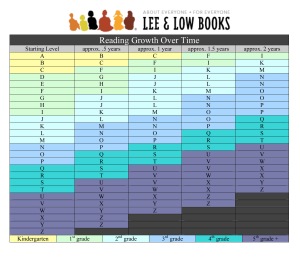 Jaclyn DeForge, our Resident Literacy Expert began her career teaching first and second grade in the South Bronx, and went on to become a literacy coach and earn her Masters of Science in Teaching. In this series for teachers, educators, and literacy coaches, Jaclyn discusses different strategies for ensuring students hit end-of-year benchmarks in reading.
Jaclyn DeForge, our Resident Literacy Expert began her career teaching first and second grade in the South Bronx, and went on to become a literacy coach and earn her Masters of Science in Teaching. In this series for teachers, educators, and literacy coaches, Jaclyn discusses different strategies for ensuring students hit end-of-year benchmarks in reading.
These days, the words testing or assessment tend to bring up many conflicting emotions among educators, but determining where your students need to be at the end of the year and how you (the teacher)are going to keep track of individual progress toward each standard is a key part of proactive planning.
With my students, it was really important to me that they feel ownership of their success by being able to clearly see how their actions affected their achievement, so we did a lot of individualized goal setting and consistently measured our progress toward said goals. The result was a classroom full of empowered children who were aware of where they were strong and what they needed to work on, and confident in the knowledge that there was a plan as to how we were going to get there. This transparency in teaching can absolutely yield huge rewards, but it does take some proactive planning.
affected their achievement, so we did a lot of individualized goal setting and consistently measured our progress toward said goals. The result was a classroom full of empowered children who were aware of where they were strong and what they needed to work on, and confident in the knowledge that there was a plan as to how we were going to get there. This transparency in teaching can absolutely yield huge rewards, but it does take some proactive planning.
Over the next several weeks, my posts will be dedicated to the goal setting process in reading: where to set each goal, when to assess, how to keep track of progress toward the goal, and how to set each student up with concrete steps toward reaching their goal through the running records assessment and reading conferencing.
When reflecting on the “where” (i.e. what you would like each individual student’s independent reading level to be at the close of the school year), the Common Core Standards directly address text level complexity, and provide specific Lexile Levels ranges of where students should be reading by the end of the year to hit the standard. Quick summary:
- 2nd – 3rd graders are expected to be able to read and comprehend books that fall within the 450-790 complexity band (approximately levels L-P), 2nd graders with scaffolding and 3rd graders independently.
- 4th and 5th graders are expected to be able to read and comprehend books that fall within the 770-980 complexity band (approximately levels O-V), 4th graders with scaffolding and 5th graders independently.
From this, we can infer that K-1st graders need to be able to read and comprehend books that fall within the 200-450 complexity band (approximately levels A-K), kindergarteners with scaffolding and 1st graders independently. For more information, directly consult the Common Core Standards, Appendix A, page 8. I’ve attached a chart that approximates what a 1/2 a year, a year, a year and a 1/2, and 2 years of reading growth look like from each beginning of year reading level as a guide:

Here are a few questions to mull over when considering where to set individual student goals:
- How far behind do you anticipate your students to be? Or conversely, how far ahead? How close do you anticipate your students to be in relation to the end of year standard?
- Do you anticipate large gaps between student reading levels, or is your incoming class fairly homogenous? This will affect the size of your reading groups.
- How much time will you have allotted in the classroom schedule to accommodate Guided Reading? The longer the time allotted for you to meet with each individual reading group, the larger the gains are likely to be.
- How large will your class likely be? How small will you be able to keep your Guided Reading groups? In my experience, the smaller the reading group, the more opportunity each student has to participate in text-based discussions, which factors into how quickly the student is able to progress.
- How often will you be able to assess using rigorous, comprehension-focused Running Records? Along the same lines, how often do you anticipate being able to conference with each student on their independent reading to informally assess their progress toward mastery of the strategies you discussed after the Running Record Assessment? More about using Running Record Assessment time to determine gaps in skill/strategy mastery in a future post!
Even if you don’t have your roster yet, or have limited information about your incoming class, this is a great exercise to do using the students you had this year. Think back to where they were at the beginning of the year: How would you have answered these questions then? What do you want to do differently this year? What reading level should have been each student’s end of year goal?
Further Reading:
Regular assessment and student motivational strategies
Determining and delivering strong “magic three” questions
Do you have big goals for your students in reading this year? Drop me an email at curriculum@leeandlow.com or share yours in the comments!


4 thoughts on “Goal Setting for Reading Success Part 1: Setting a reachable, standards aligned reading goal”
Comments are closed.